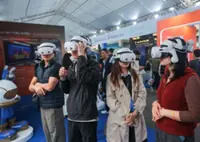In a driving test on pretend motorway, testers examine how well the emergency brake assistant of the rear car works. — dpa
ZALAEGERSZEG: The Mercedes-Benz is trailing behind a Kia saloon at motorway speed, the distance between the two cars is correct and the atmosphere is relaxed.
The driver and passengers are chatting or listening to music and their thoughts are not on the road ahead.
Already a subscriber? Log in
Save 30% OFF The Star Digital Access
Cancel anytime. Ad-free. Unlimited access with perks.





